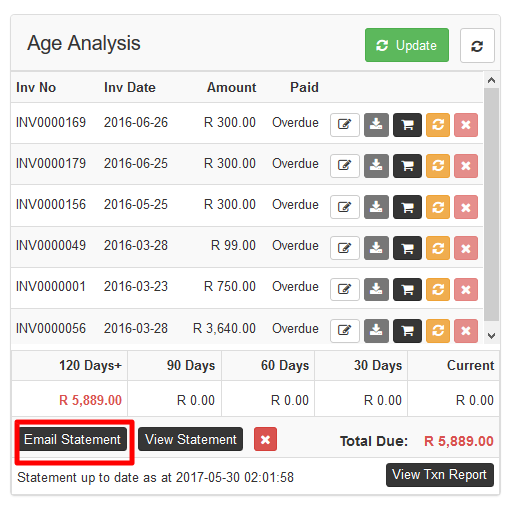1. How much does the client owe us?
1.1. Age Analysis: All customers
To find your age analysis for all your customers, you can go to “Billing” and then click on the “Age Analysis” option.

Customer Age Analysis screen with all customer’s age analysis:
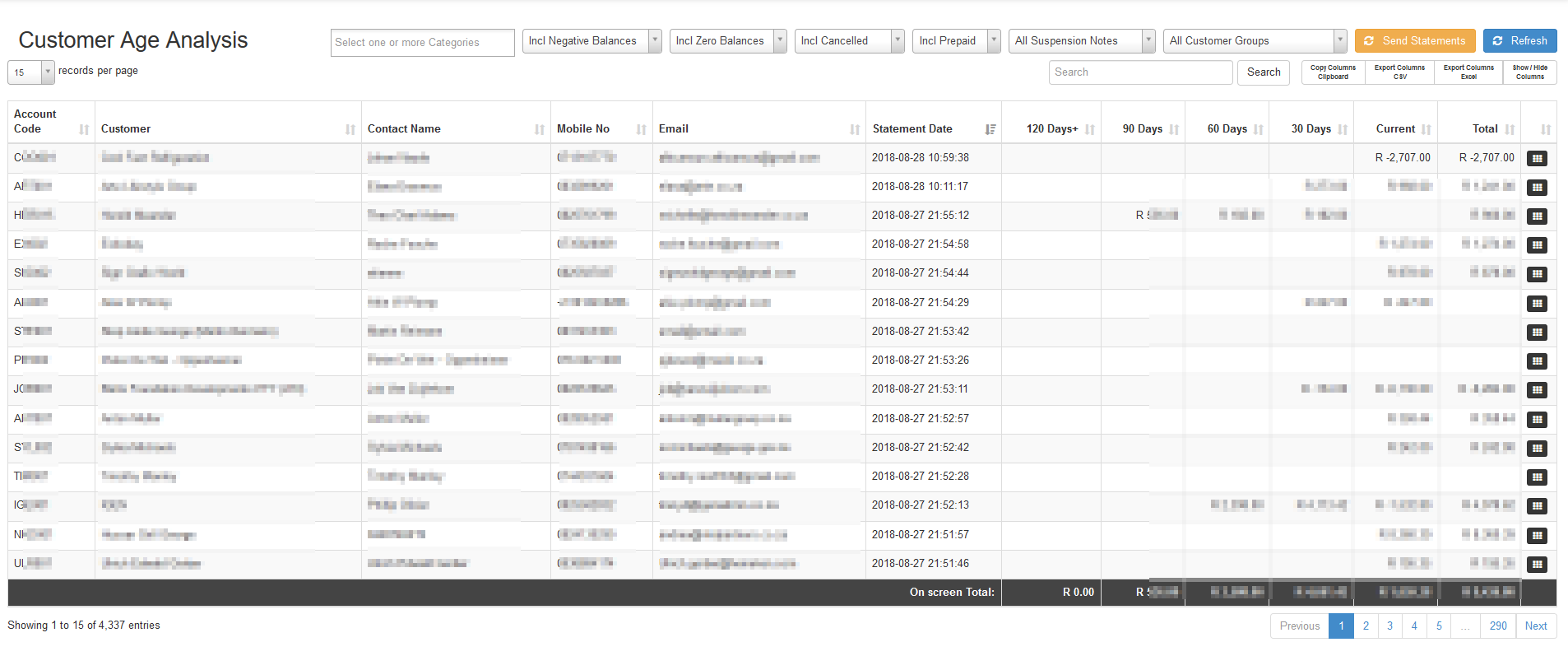
1.1.1. Viewing customers on the age analysis.
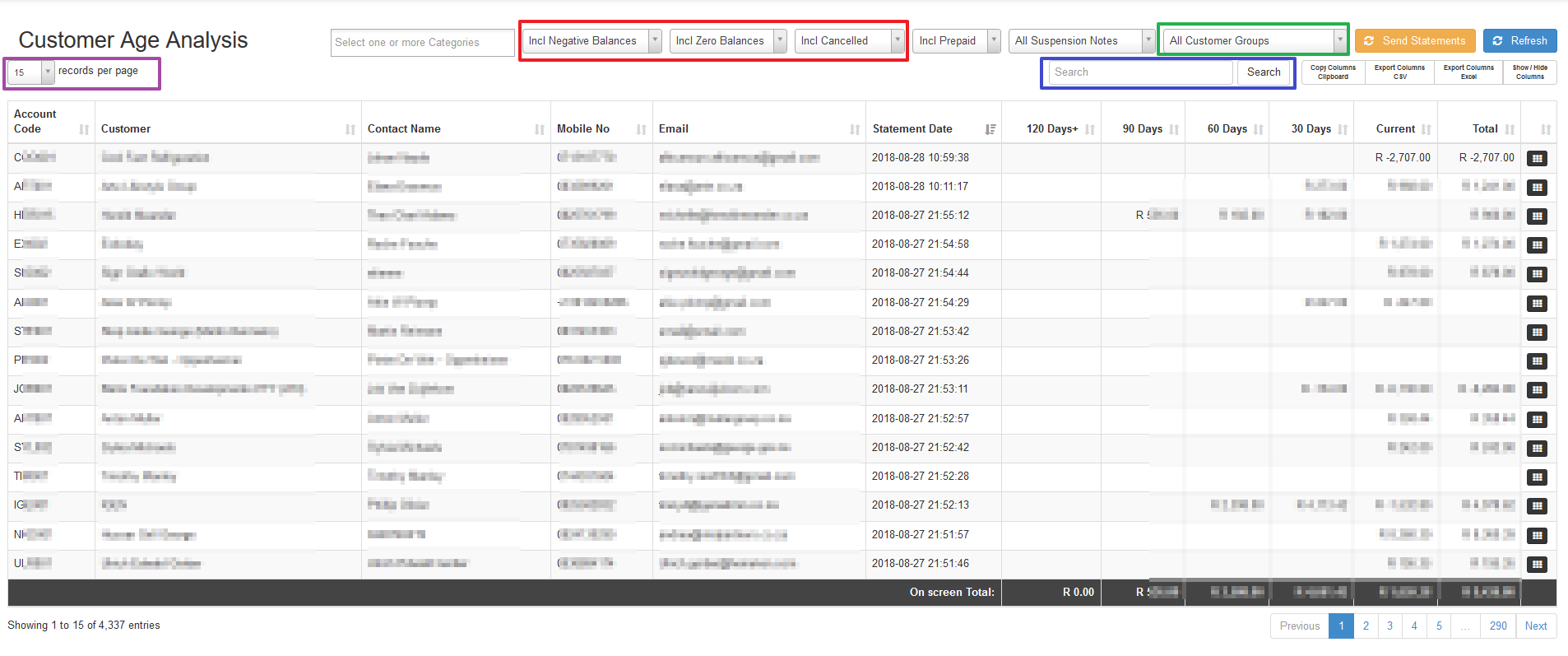
| Purple: |
Here you can change how many customers you want to see on each page. |
| Green:
|
If you only want to view customers that are in certain groups, click on the drop-down menu and choose the group you want to view. |
| Blue: |
If you are looking for a specific client, look for the search function. There you can type in the details of the customer you are looking for. |
| Red:
|
Generally you would want to exclude statements with negative balances, exclude statements with zero balances and exclude cancelled customers when sending statements. |
When clicking on the “Send Statements” button, statements will only be sent to customers that you filtered on. If no filters selected, statements will be sent to all customers.
1.1.2. Reading and exporting the age analysis.

| Pink: |
If you need to export the data on the screen, you can choose to either export it to a CSV. format or a normal excel sheet. |
| Red: |
These are the headings for the customer details. The headings are as follows: Account code, customer, contact name, number, email and the total amounts outstanding for each period. Each one of these headings has the ability to work as a filter. Example: If you want to see the customers with 120+ days outstanding balances, click on the “120 days+” heading. Clicking once means all those names will be at the bottom / last page. Clicking twice means all those names will be at the top / on the first page. |
| Orange: |
This is the actual customer details that fall under the headings, each customer with his or her unique amounts. |
1.1.3. Syncing the age analysis.
In the green square, you will find two buttons: If you click on the black button, the customer’s profile will open in a new tab. By clicking on the orange button, you will update that specific customer’s age analysis.
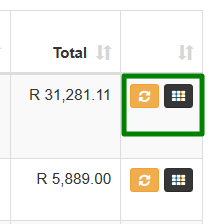
1.1.4. Sending bulk statements
You will be able to define who you want to send your statements to by making use of the different filter functions at the top. Please remember to change the records to page section as if you don’t, the system will only send statements to those customers listed on the screen.

To do a bulk statement run, you can click on the “Send Statements” button. On the pop-up screen, click on the “Send” button to continue sending statements to your customers.

1.2. Age Analysis: Customer specific
When you are busy with a specific customer, you can also view a smaller version of the age analysis on the customer’s profile. This age analysis will specifically be for the current customer that you are working on. To get to this age analysis you need to go to the “customer edit“ screen. If you are unsure how to get to this screen please see the manual for List of Customers.
Once you are on the profile, you can find the customer’s age analysis along with the payment receipts (payments made by customers) underneath the recurring billing section. Here you can see invoices, credit notes and adjustments made on the customer’s profile. It also shows you when last the age analysis was updated as well as the invoice status: paid, partially paid or overdue.
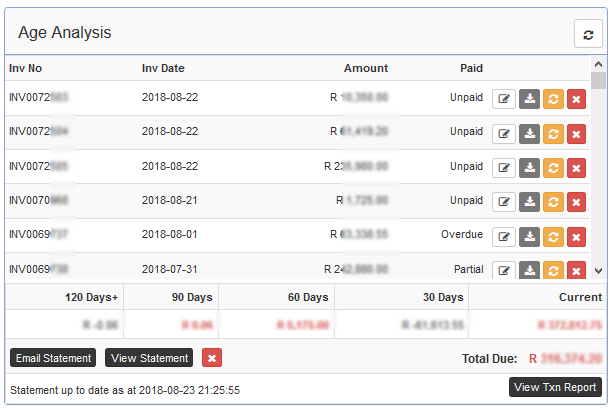
1.2.1. Age Analysis:
Before you work according to what the age analysis says, remember to click on the “Update” button. Even if the date says that the statement was last updated 08:00 that morning, it might be that the banking in Sage One has now been updated and the customer’s latest payment is now allocated to the profile. If this is the case, the “Total Due:” amount will change, if no customer transactions have taken place, the “Total Due:” amount will obviously stay the same.
Note: Your username needs to be in the “SageOne Sync User Exemption” list for you to be able to see the “Update” button on a Customer’s Age Analysis block.
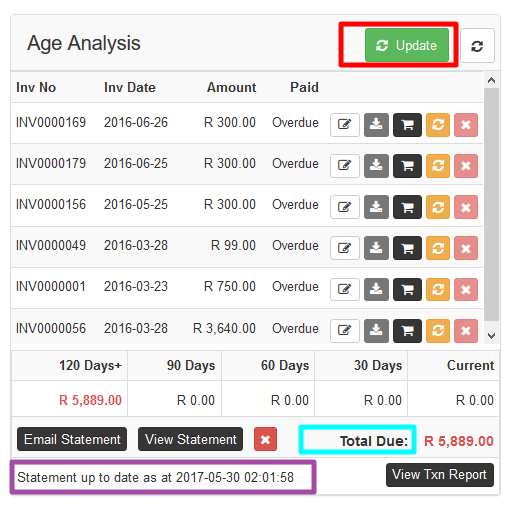
*Please note that your manager first has to release the credit notes, adjustments and write-offs before it will reflect on the customer’s profile.
1.2.2. Payment Receipts:
Underneath the Age Analysis block on the customer profile, you will find the payment receipts block. Here you are able to view all the payments that have been successfully allocated to the customer’s profile. Please note that if the customer used special references like “installation fee”, or “domain” and did not send the proof of payment, the chances are that the payment has not been allocated to the customer’s profile. If you do not see the receipt the customer is talking about in this block, ask the customer for the proof of payment and forward the proof of payment to the person who does the banking allocations.
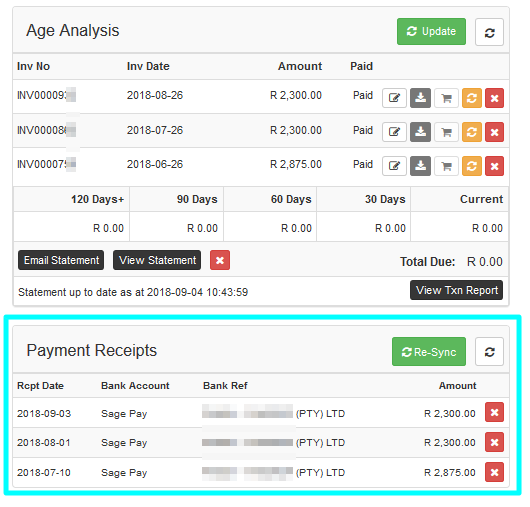
1.2.3. Invoice status:
Before you send invoices and statements to customers, first determine the correct amount due and which invoices are still outstanding. The invoice status can be seen in the red section, below. This will show you if the invoice is unpaid, partially paid, paid or overdue. In cases where the total due amount is R0,00 but the invoices show partially paid, unpaid or overdue, please log into sage one and match the customer’s payment to the correlating invoice. See Sage One manual or short summary below.
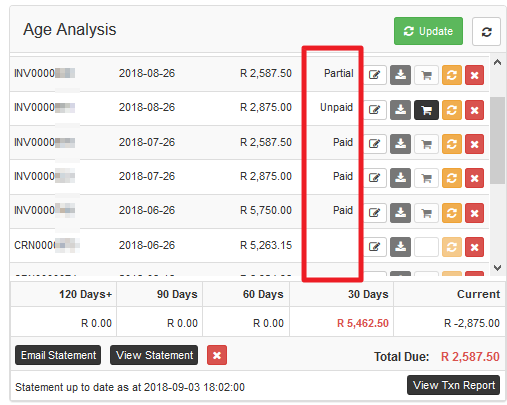
1.2.3.1. Sage One Allocations (matching):
Once you have logged into Sage One, go to Customer – Transactions – Allocate Receipts. Choose the customer you want to work on, click the refresh button and wait for the screen to finish loading. Drag the payments over to the correlating invoices and then click save. When you are done with this, click the update button on the age analysis and the invoice status will change to paid or partially paid.
1.2.4. Sending Statements: From the customer profile
When sending individual customers a statement, it is advised to use the “Send Statement” function on the age analysis found on the customer’s profile (see below).
